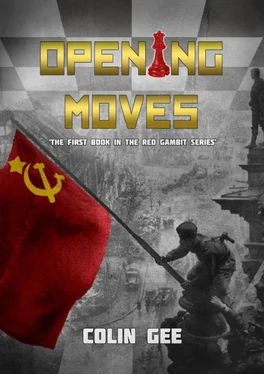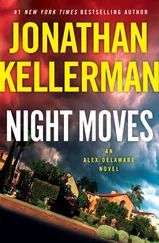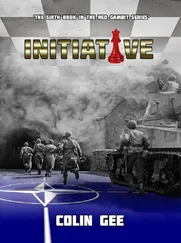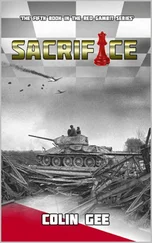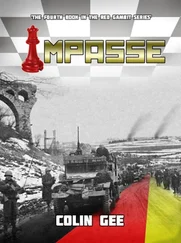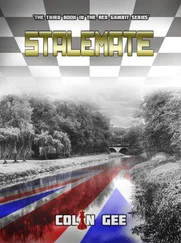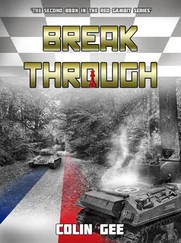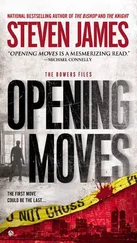A 6-pdr position became the focus of much fighting, with the Soviets determined to capture the weapon and the Welch equally determined to retain it. The gunners had succumbed in the first rush and lay dead around their weapon.
A T-34 pushed forward, encouraged by signs of friendly infantry in the buildings on either side of Adolphsplatz. Another survivor of the previous attack, this commander, an experienced and decorated Starshina, had got through his war so far by skill and luck and, by his own admission, more of the latter than the former.
His hull gunner was on the ball and a short burst killed a ‘C’ Coy Corporal intent on setting up a PIAT to their front. A quick glimpse through the smoke and another burst took the lives of two stretcher-bearers rushing forward through Adolphsplatz as they searched for ruined bodies to transport to the Aid post.
The same hole in the smoke gave the tank commander his own glimpse of other enemy to his front, and he knew his luck had finally run out.
An ‘A’ Sqdn Sherman had him targeted and he watched as the white blob reached out towards him, struck in a shower of sparks and then whined away off the mantlet, failing to penetrate.
Ordering his gunner to return fire, he got his driver to manoeuvre to the right, moving the T-34 into the lee of the building where ‘C’ Company was fighting for its life against his infantrymen.
The 85mm barked and the shell streaked past the enemy tank, striking the bridge beyond and ricocheting skyward.
The Sherman fired again, hitting the side of the building and bringing down brickwork, adding more dust to the smoke and immersing the T-34 in a cloud of particles and smoke, shutting off all sight of the enemy.
Opening his hatch and holding the half-moon section forward to provide cover for his upper body, the Starshina deployed his PPS, in case enemy infantry took advantage of the cover offered by the smoke and dust to try and get close in.
The Sherman, having no target registered, decided on a speculative shot and fired another AP shell.
The Starshina’s luck had indeed run out and it was an unusual death.
The solid AP shell would have missed the tank but the vertical commander’s hatch increased the height by a short distance. Even then, the round only lightly kissed the top side of the hatch on its way past and into the buildings behind. That ‘kiss’ was enough to slam the heavy cast of metal into the NCO at a speed, which destroyed his chest in a micro-second, leaving him trapped in the hatch and hanging down inside the turret. His crew were oblivious to his death until the smell of blood, urine and faeces overtook them. They withdrew immediately, the turret gunner firing parting shots from main and coaxial weapons as they went.
It was ‘D’ Company RWF who had the hardest fight to date, with scores of Soviet troopers breaking into the ground floor of the Rathaus and forcing the fusiliers back. This permitted more Russian troops to charge across Große Johannisstraße relatively unhindered.
Major Llewellyn immediately ordered the 555th Engineers forward and made efforts to push the stubborn Soviets out of the Rathaus.
A runner was dispatched to bring forward ‘D’ Coys reserve platoon and this arrived within minutes, less two men wounded in the Soviet artillery and mortar barrage.
As Allied reserves plunged into the fight, the 134th Flamethrower Company was sent forward to expand on the success of the ravaged 215th Rifles.
Yells accompanying Welsh and English success were soon replaced with screams in the universal language of fear and pain as Scelerov’s men set to their grisly work.
CSM Richardson’s valour went unnoticed, the fate of many acts of bravery in wartime. He charged a flamethrower group preparing to launch a flank attack through a corridor and offices. With absolutely no expectation of surviving the experience, he fired short bursts with his Sten until all bullets were expended and his life’s blood was draining from his body, his legs and stomach ravaged by a dozen wounds. In the full knowledge of what he was doing, he drew his Webley pistol and exploded the fuel tank on a dead sapper, setting fire to the corridor and a number of attacking engineers, saving the situation with his own sacrifice. The flames reached him and started to consume his flesh so he used the Webley one last time.
The Royal Welch were good troops, but there are few soldiers who will stand their ground when concertedly attacked with the flamethrower. They gave ground slowly, inflicting losses upon engineers and infantry alike, but the screams of the horribly burnt, wounded, and dying started to have a psychological effect upon the defenders.
The Rathaus was now alight on every floor but still the fighting and dying continued, men fighting for and escaping burning areas at the last minute.
A section of Soviet engineers found an undefended staircase and moved up a floor, intent on going over and coming down behind the defenders.
Only McEwan heard them coming, having been driven back from his perch on the Rathaus’ first floor when accurate Maxim fire started peppering the position. Quickly, the indomitable little Scot exchanged his sniper’s rifle for the PPSH sub-machine gun he had taken from a dead Russian the day before.
The Soviets came on, oblivious to his presence, and he easily wiped the group out with two long bursts of fire.
Two of the knapsacks were leaking fuel product so he decided to withdraw after quickly grabbing a round PPSH magazine from the nearest corpse. He tossed a grenade into the pile of dead and wounded for good measure, transforming the stairwell into a maelstrom of flame and preventing further enemy sallies as the resultant fire cooked off more fuel and grenades. He had no sympathy for the wounded enemy who screamed as they were consumed by his efforts, simply reasoning that they had brought the flamethrowers to the party so they deserved everything they got.
Reloading his PPSH, he set it aside again and took up the rifle, spotting a group of enemy all over the disabled Sherman in Hermannstraße. Prioritising the two carrying what looked like teller mines, he took steady aim and dropped the first man to the roadway. Missing the second man, he gave himself a stiff reprimand and chambered another round, hitting the running figure in the left knee.
Puzzled, he relaxed the rifle away from his body, swiftly examining every inch of the beautiful Standard 4 Lee-Enfield, seeing nothing to disturb him and, blowing away an imaginary speck of dust, placed his cheek into the modified stock and held his breath.
This shot took his target perfectly in the chest, slamming him to the ground instantly. That the next target in his sights was a woman gave him an unusual moment of pause, but he pulled the trigger and she went to her maker just the same, the impact throwing her against the tank she was circling as she exhorted the others to greater efforts.
The woman’s dying screams reached his ears, high-pitched and penetrating.
Holding his breath for another shot McEwan relaxed, as again the paratroopers counter-attacked and drove the enemy back, one German pausing to sink his bayonet into the woman and end her suffering.
Below him on the ground floor of the Rathaus, and in the Markt to his front, things were not going quite so well for the defenders.
Major Llewellyn, singed and black, had rallied his fusiliers finally, clinging onto the last few rooms on the north side of the ground floor of the Rathaus. So much of the buildings upper floors was a sea of orange flame that he had considered abandoning the position entirely, but dismissed it immediately as his men fought on in the positions either side.
Precious few of the 555th’s engineers had survived and Richardson was nowhere to be seen. D Company was down to about a quarter effectives and few of them were unscathed.
Читать дальше
